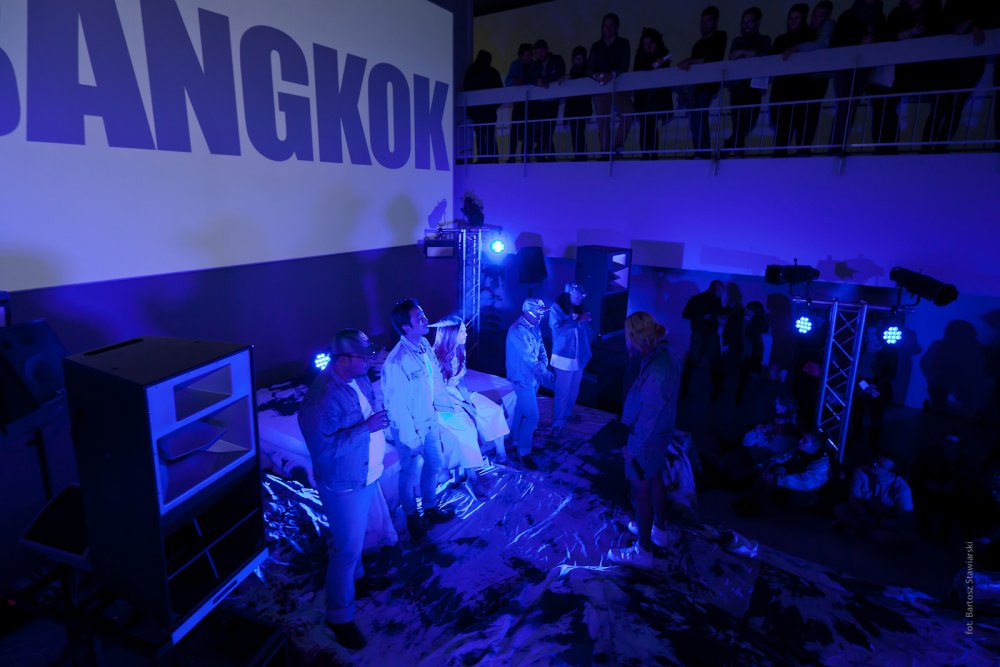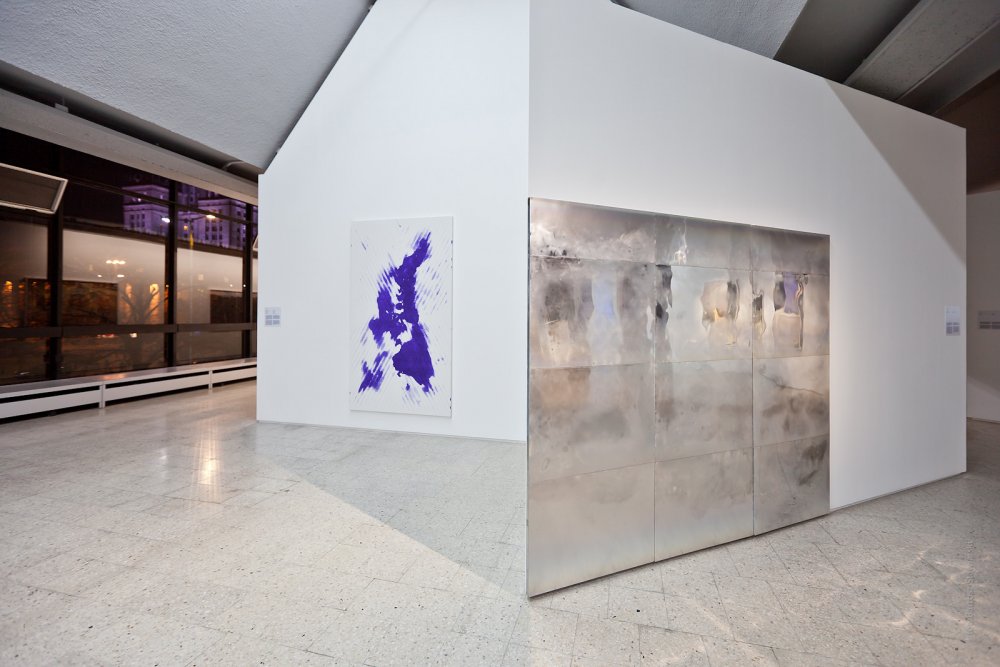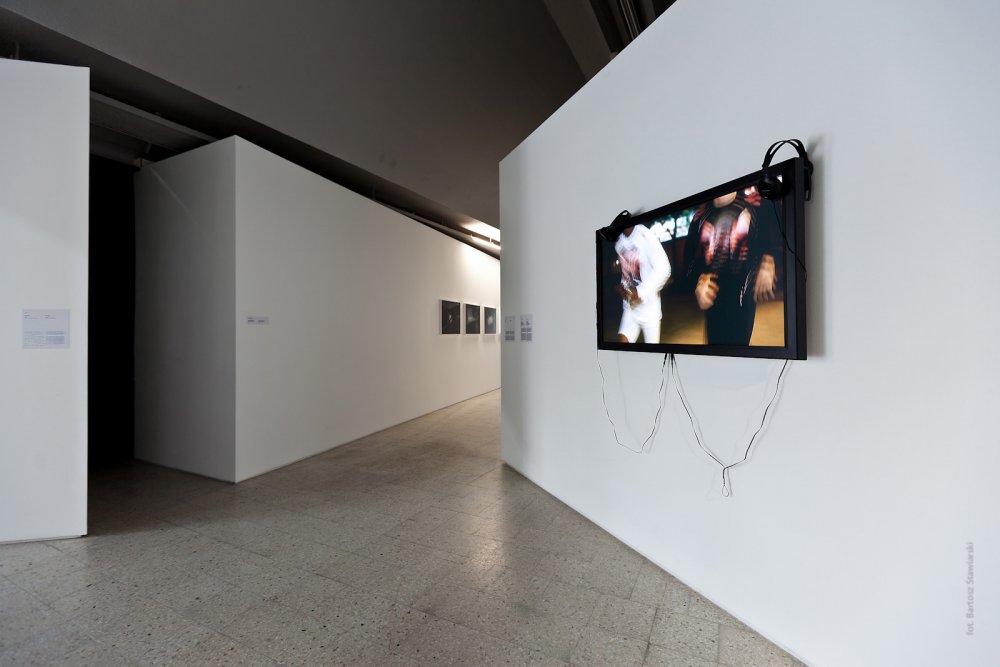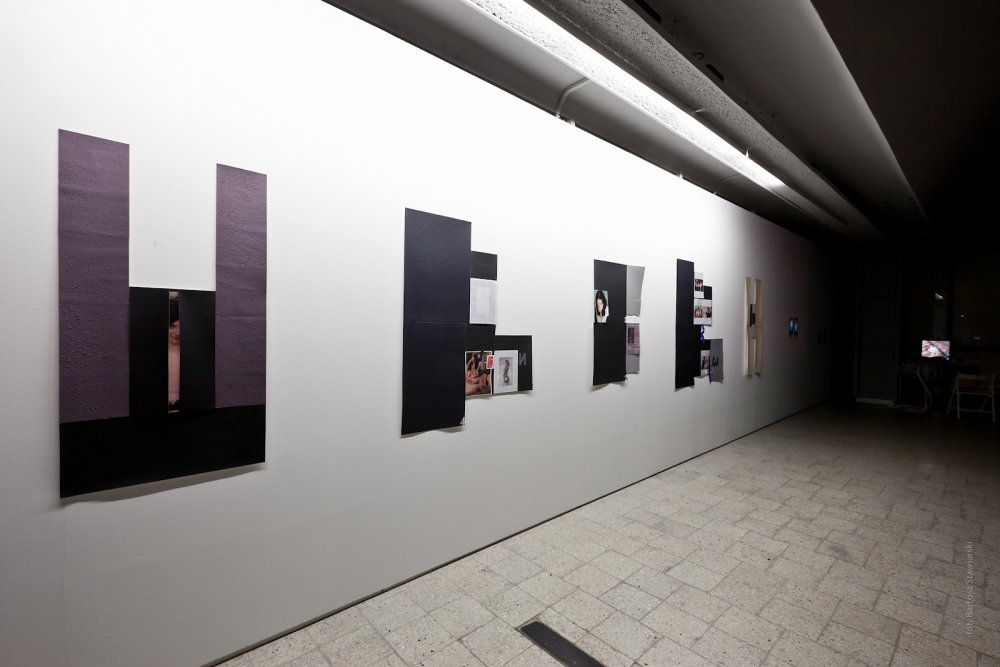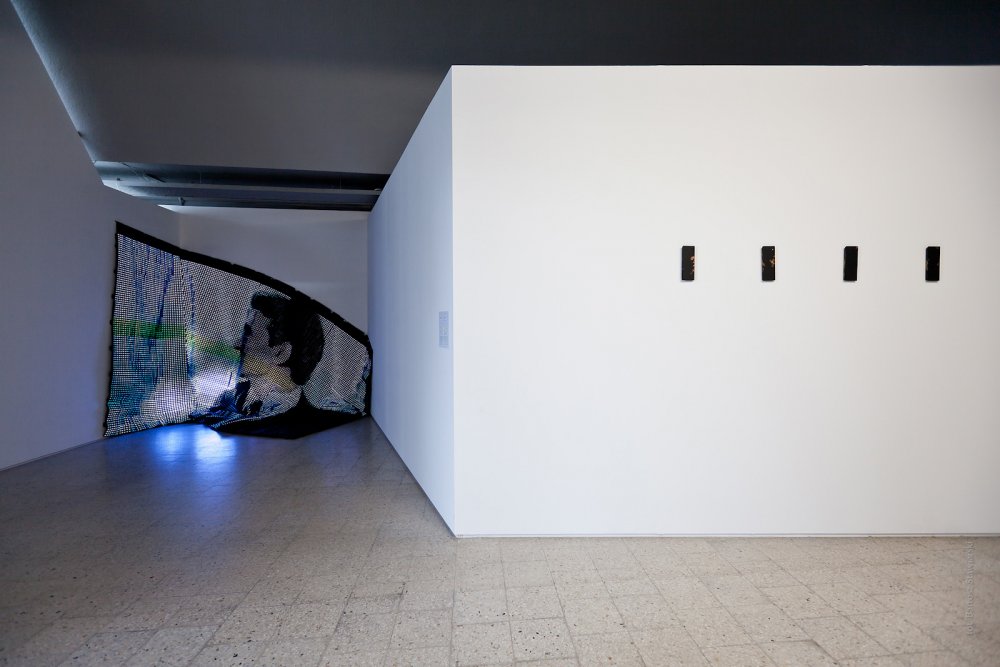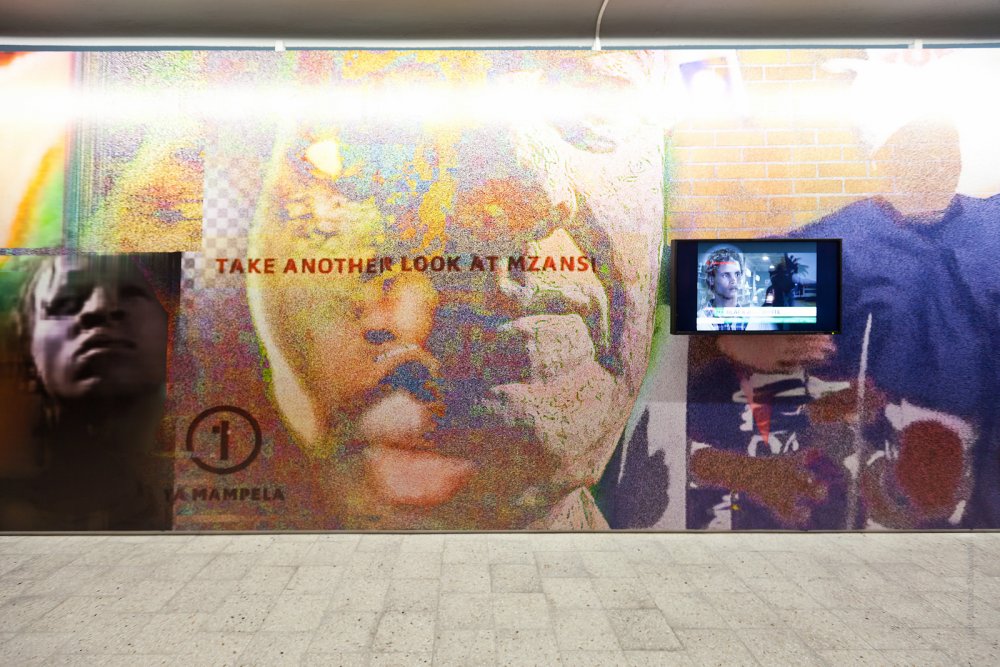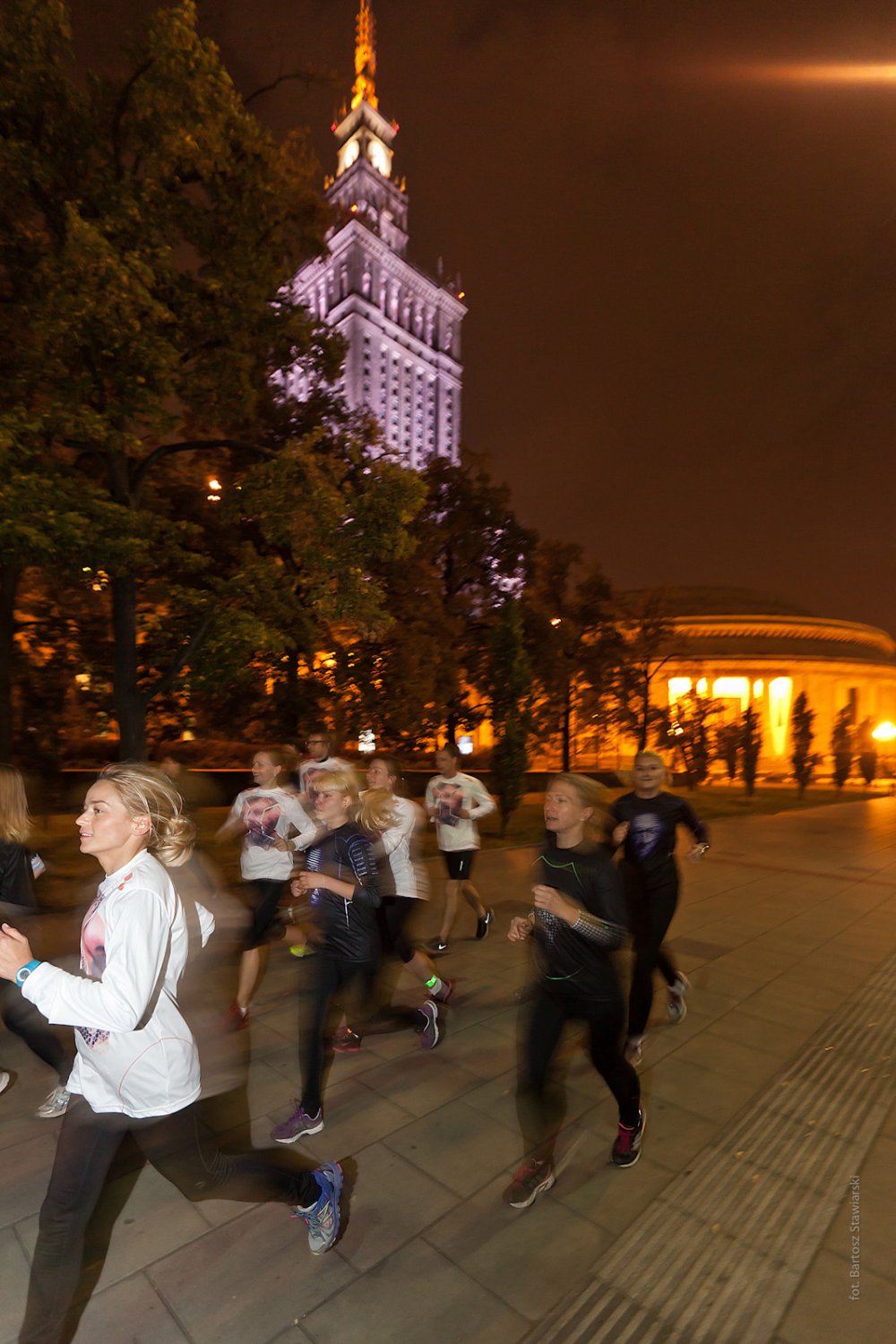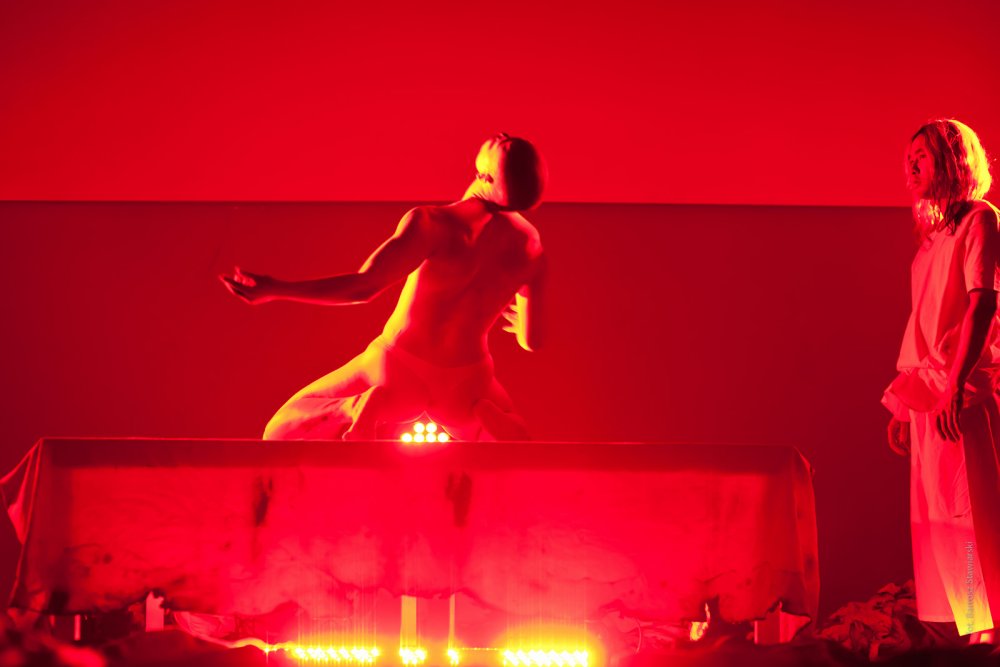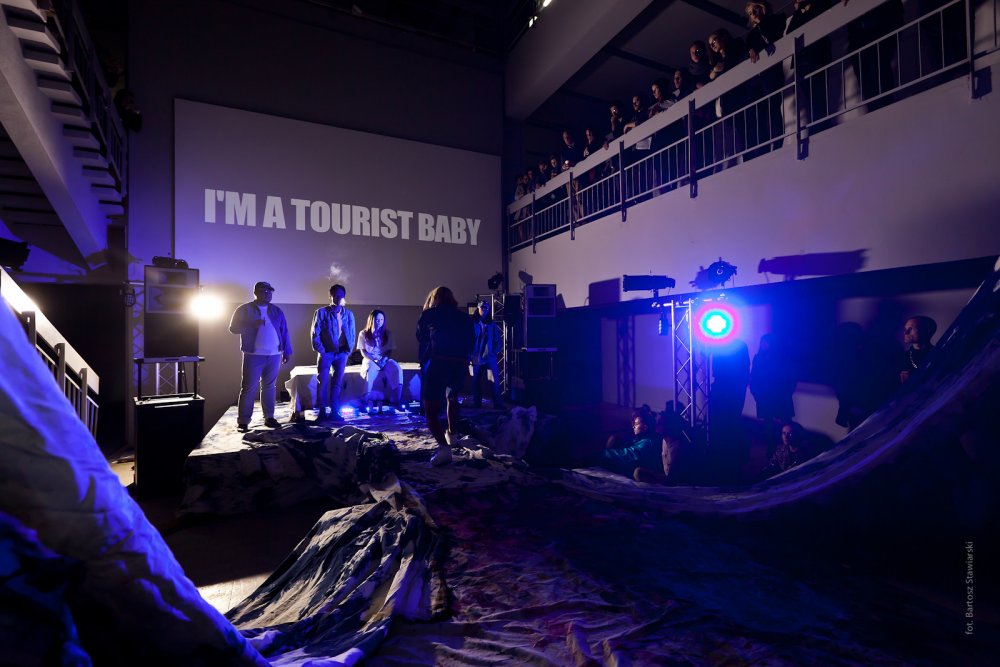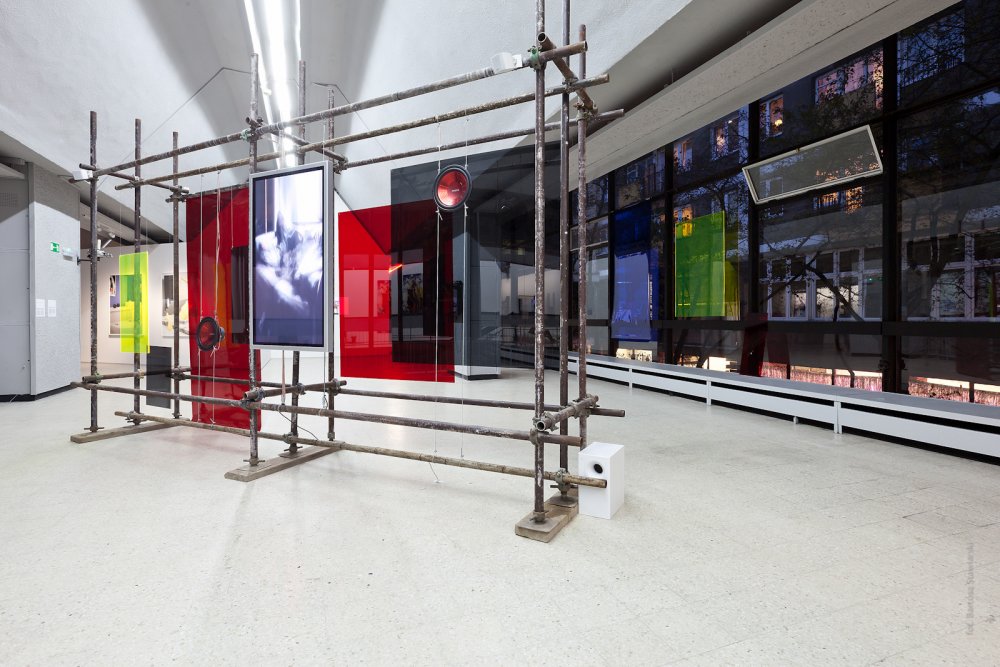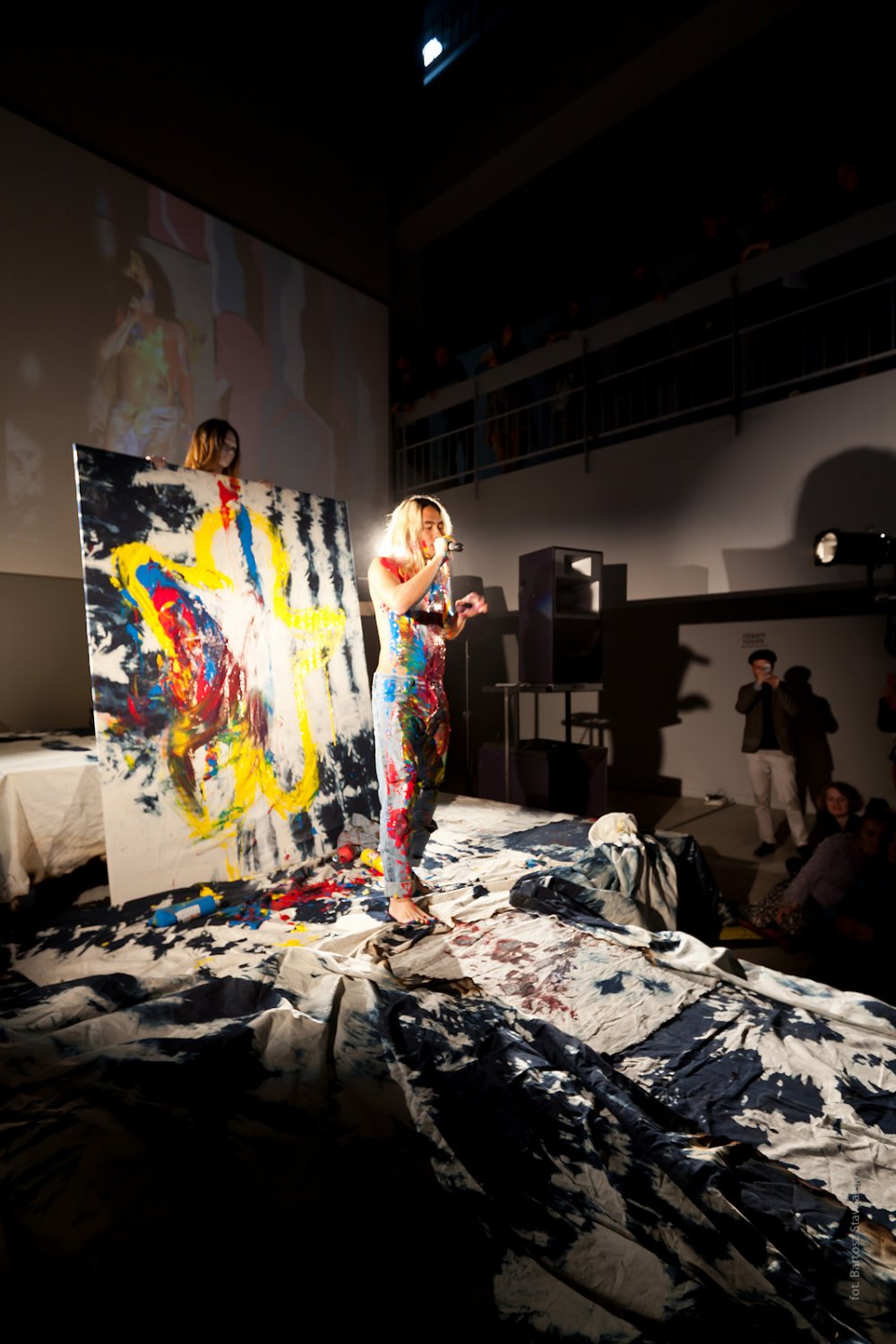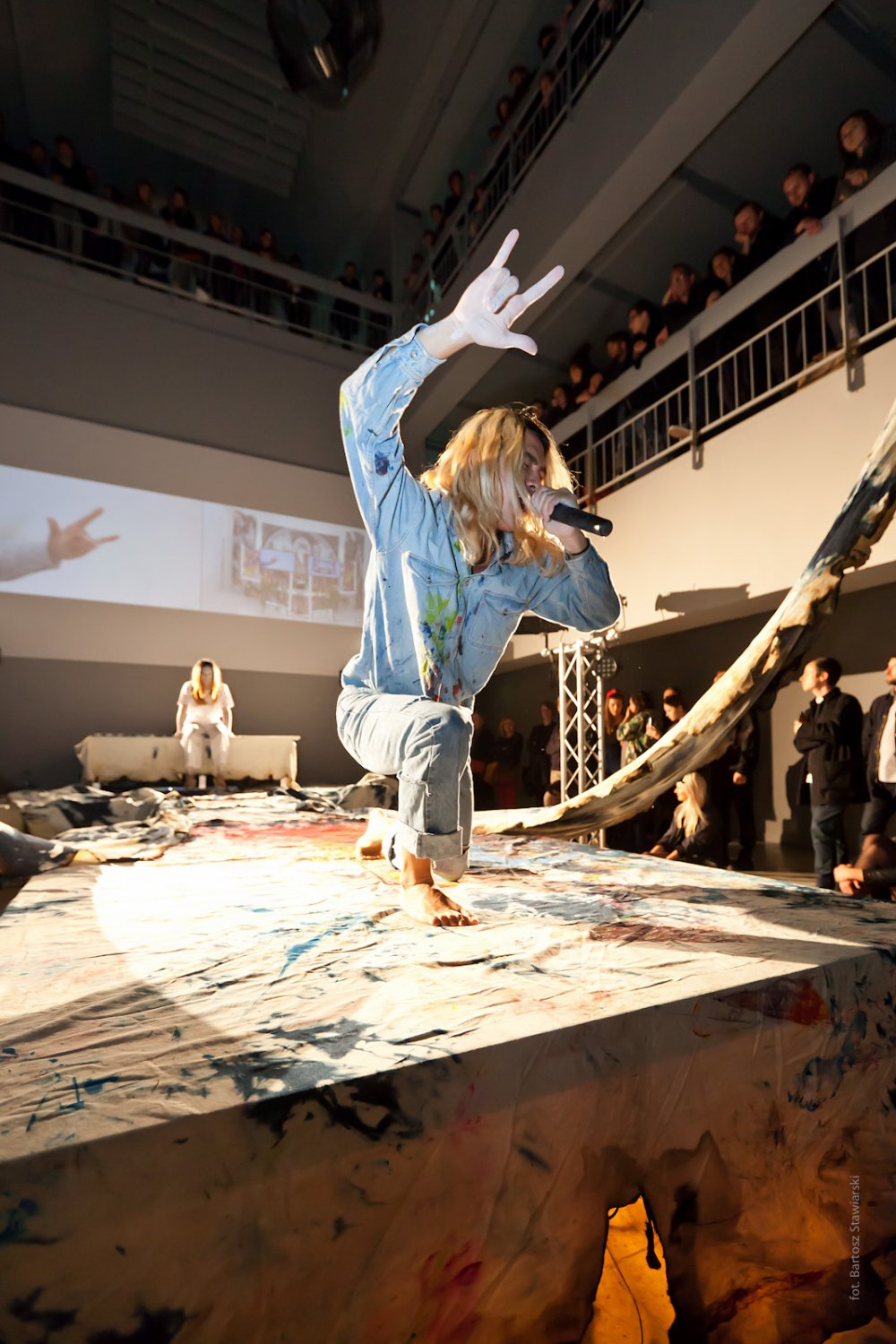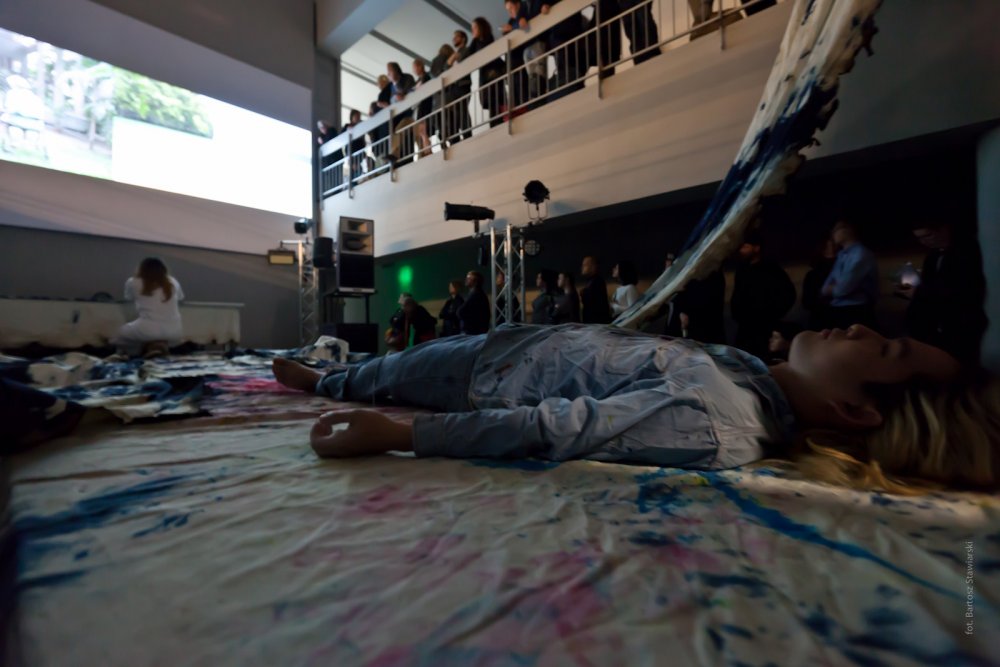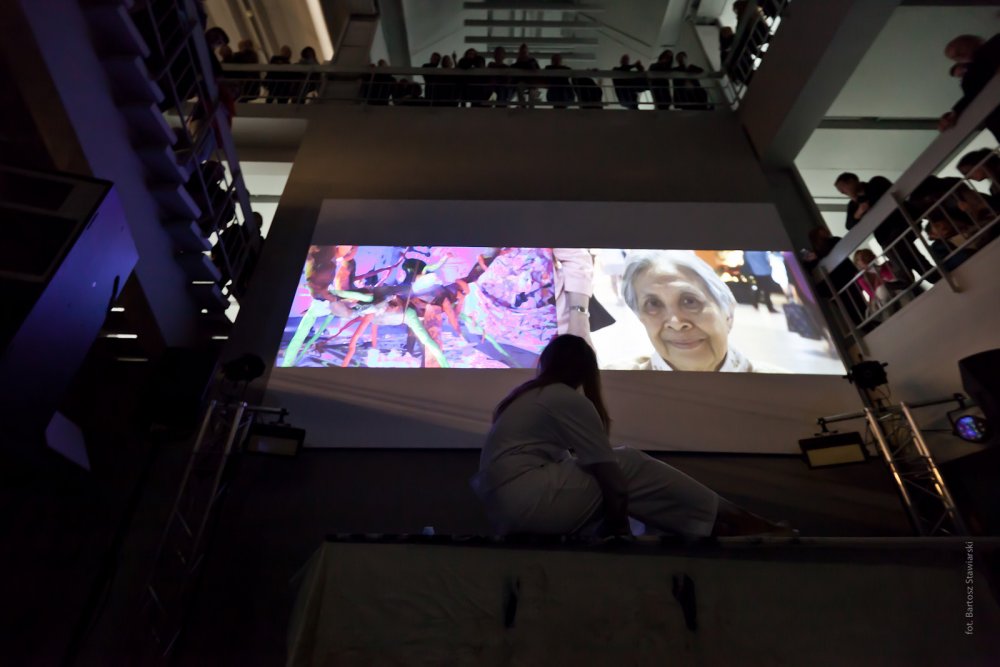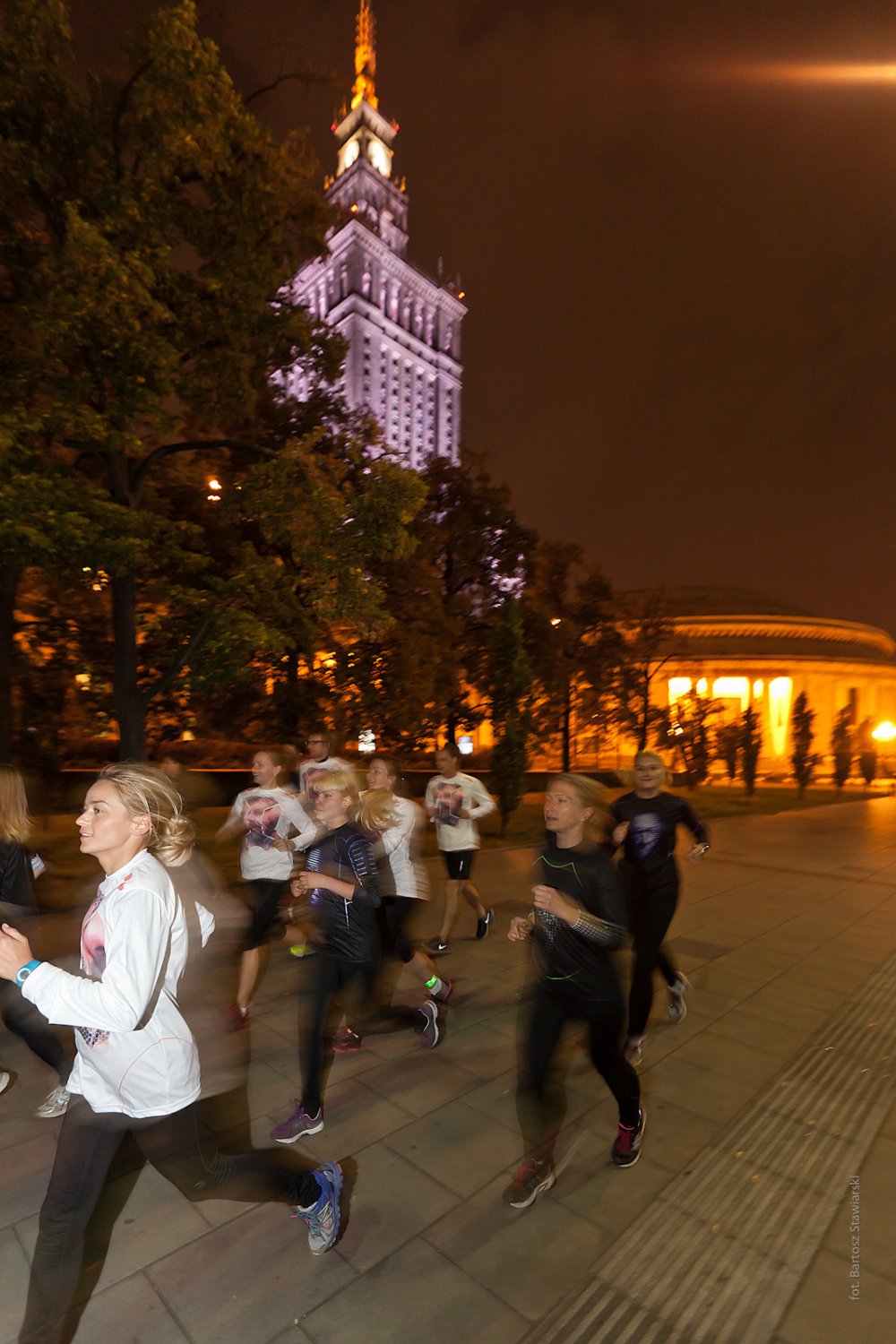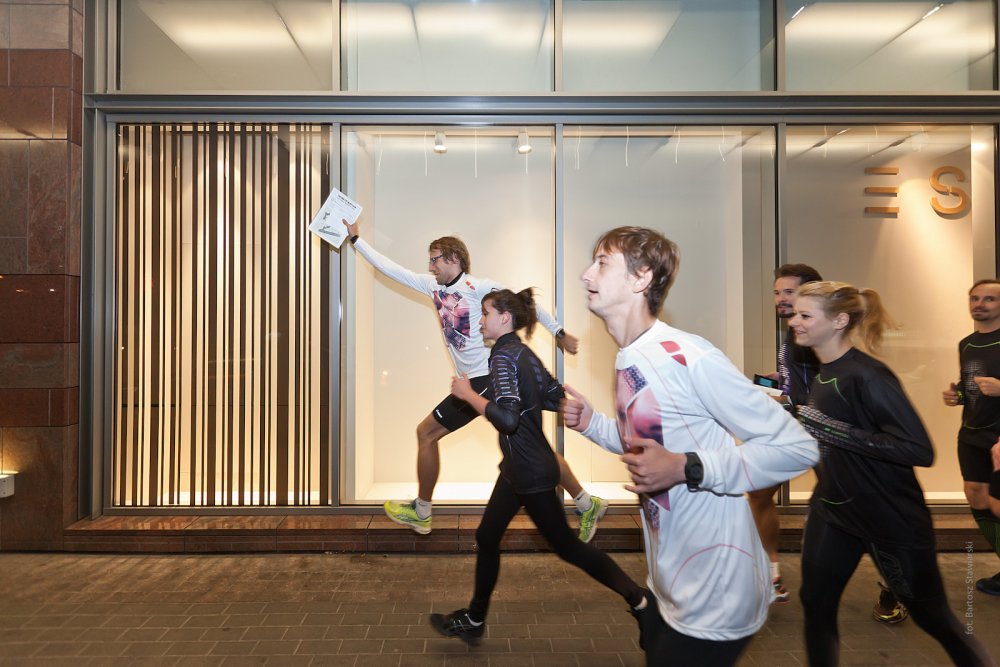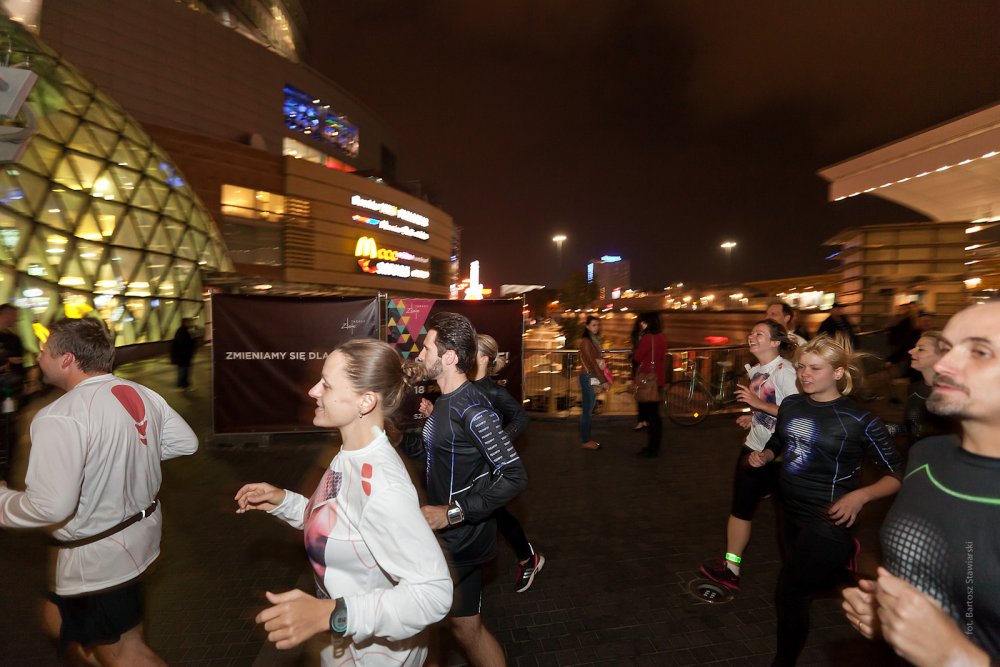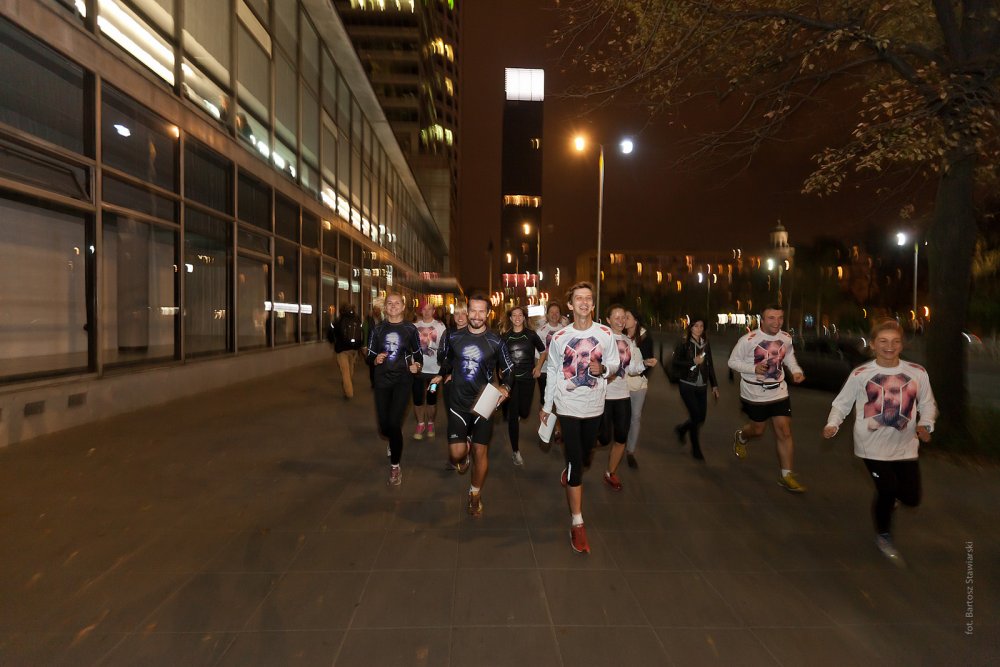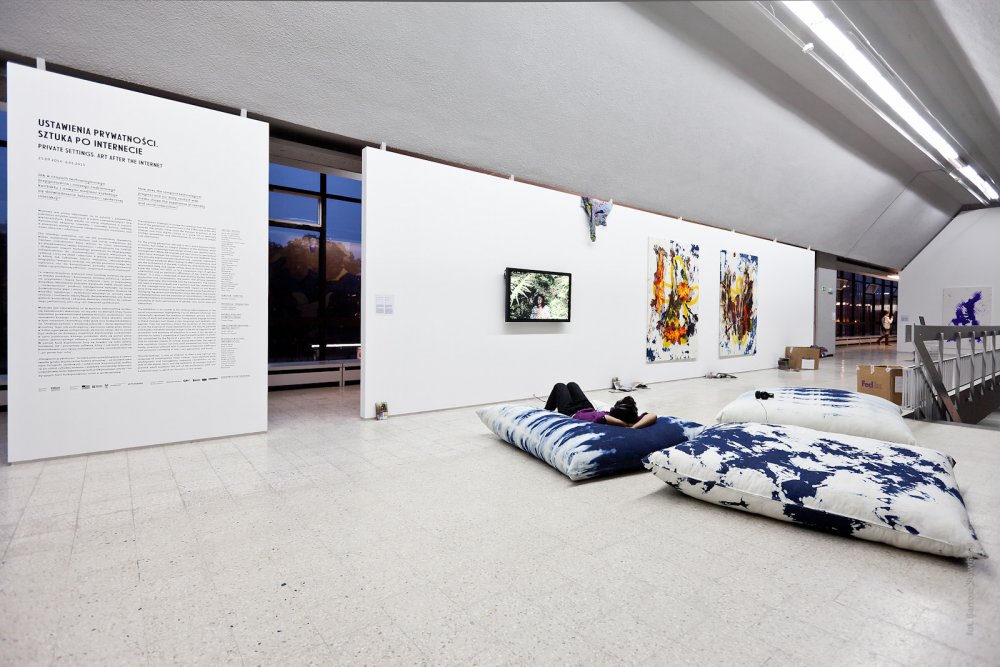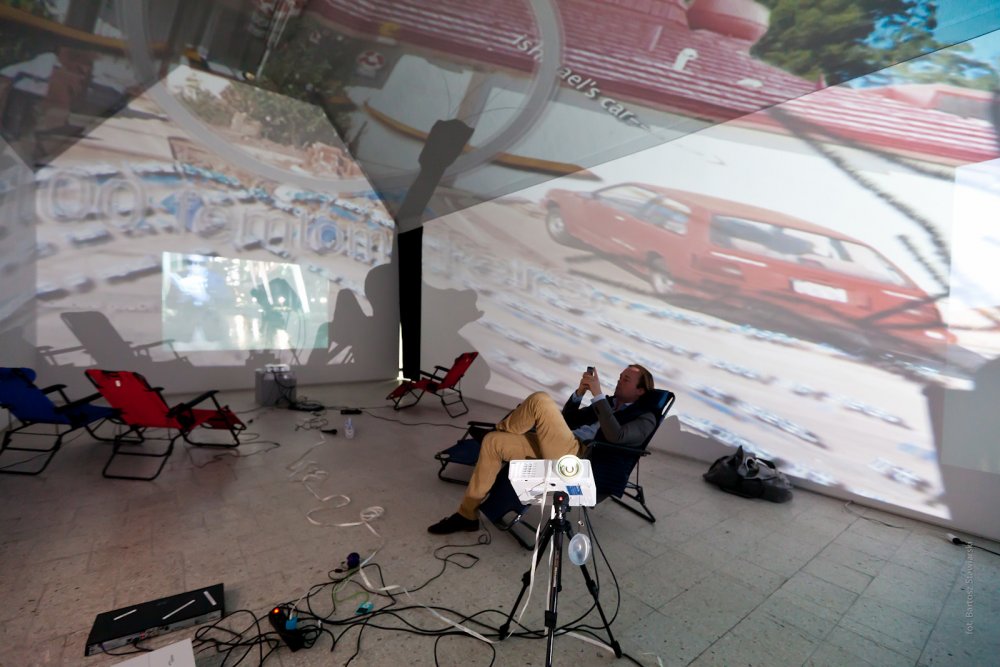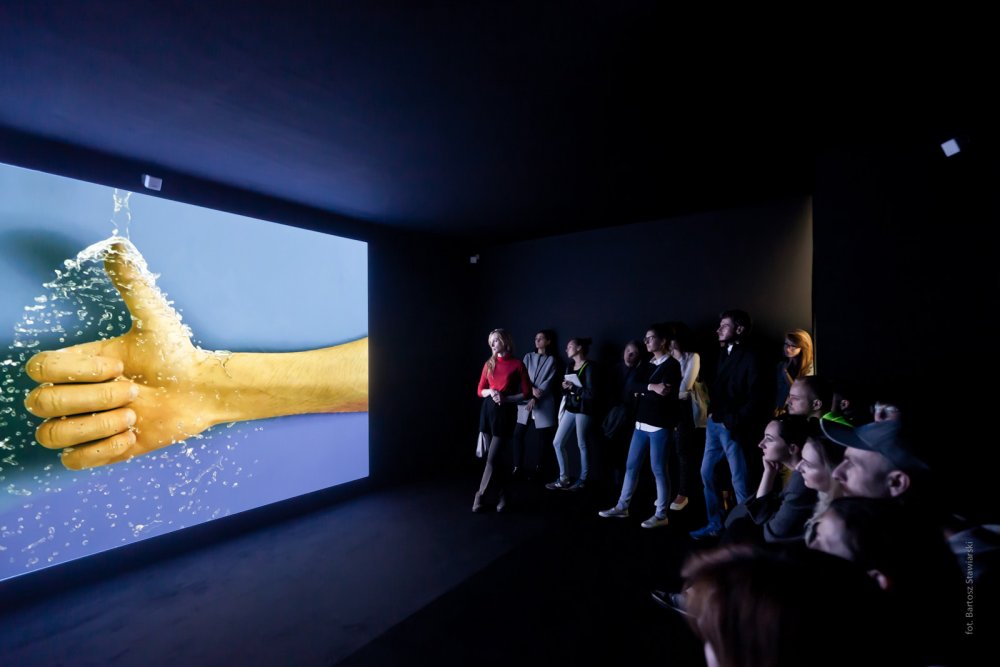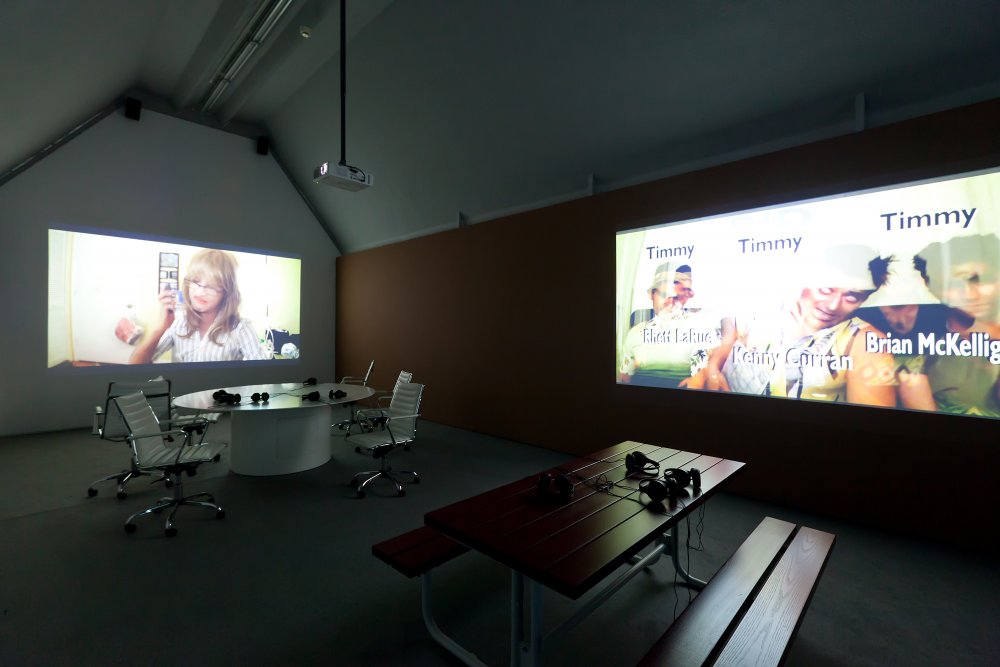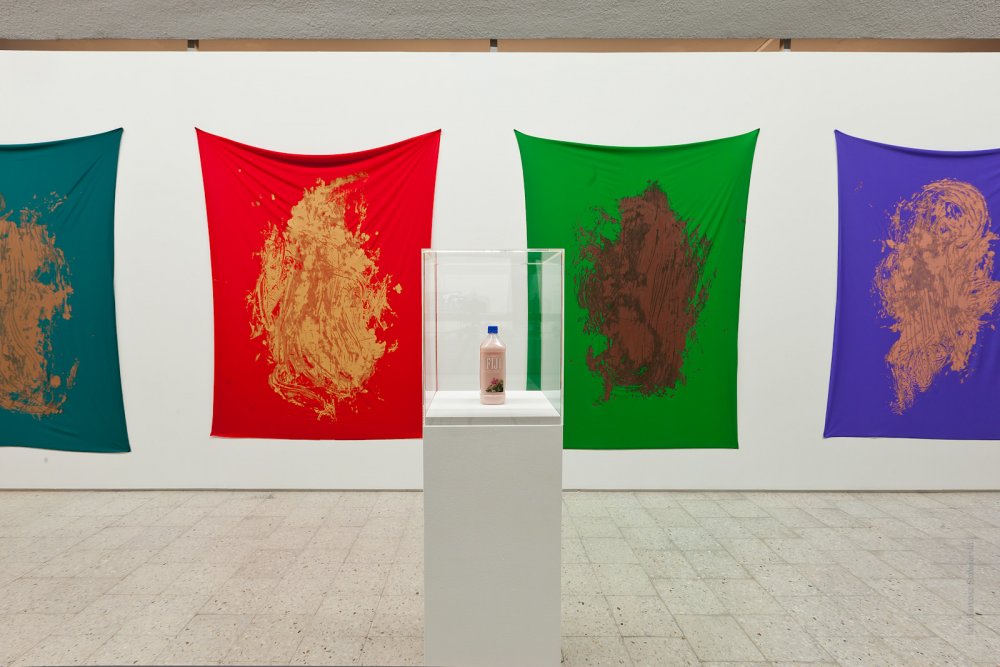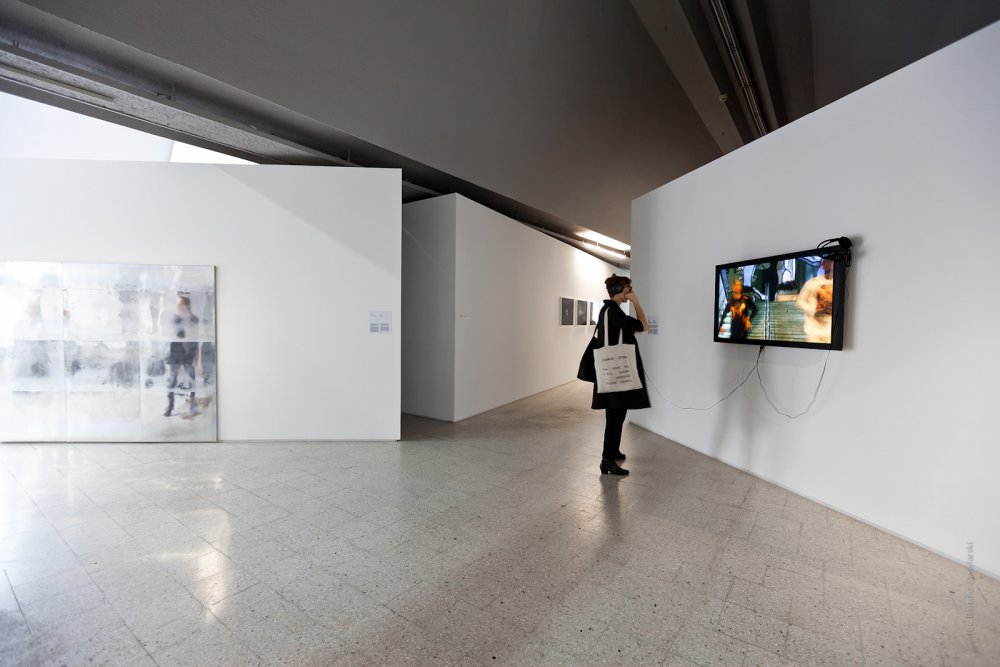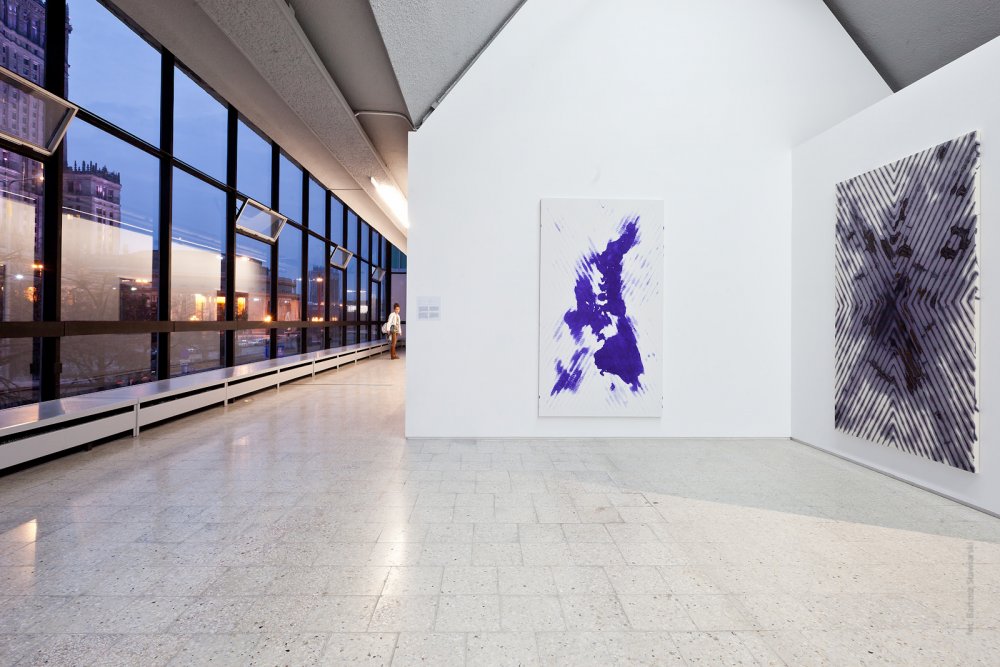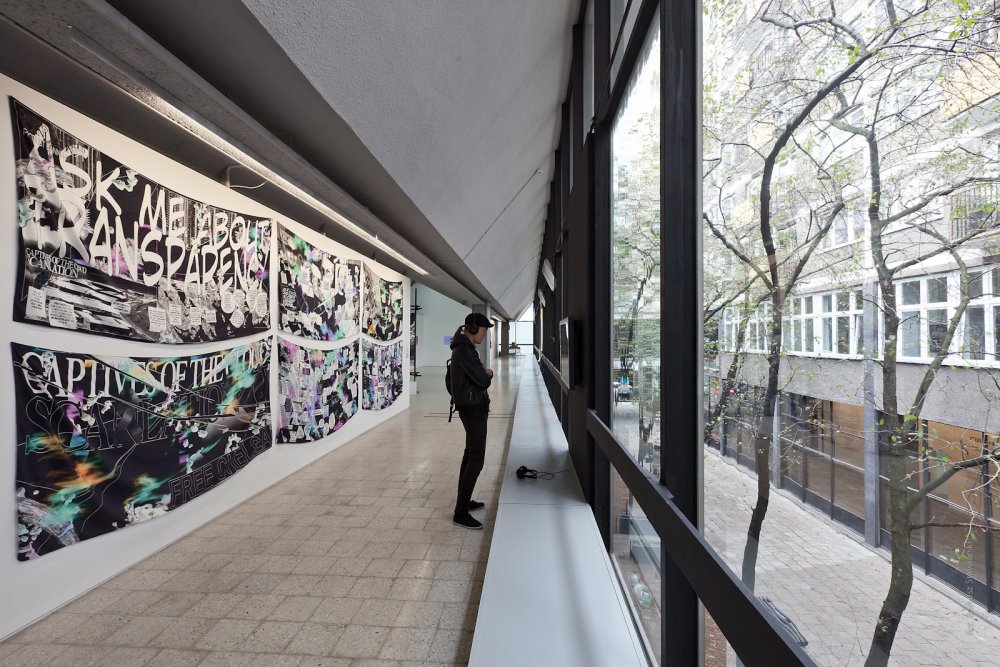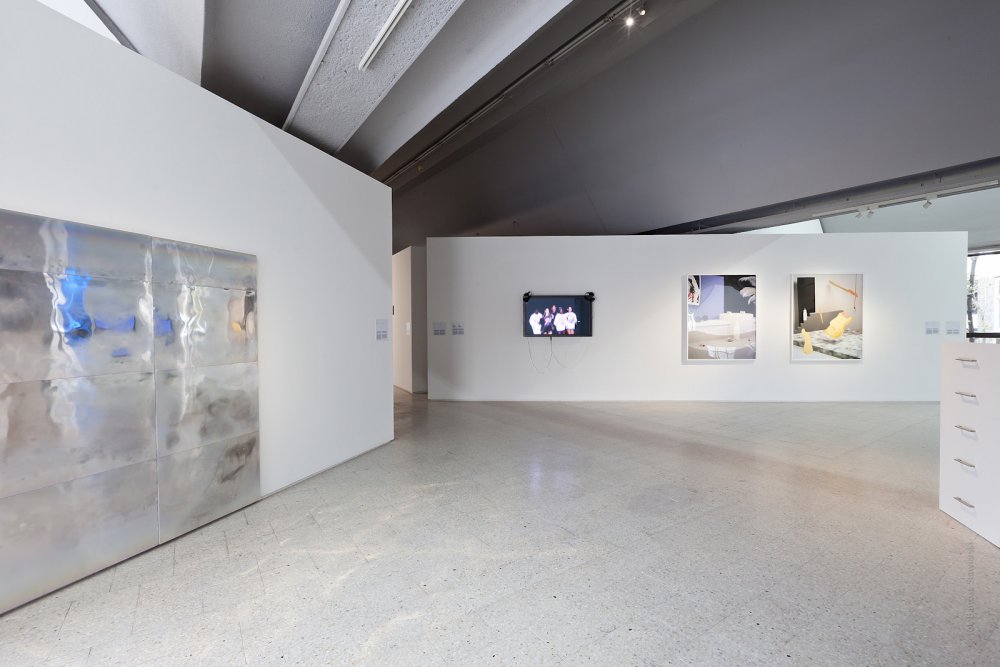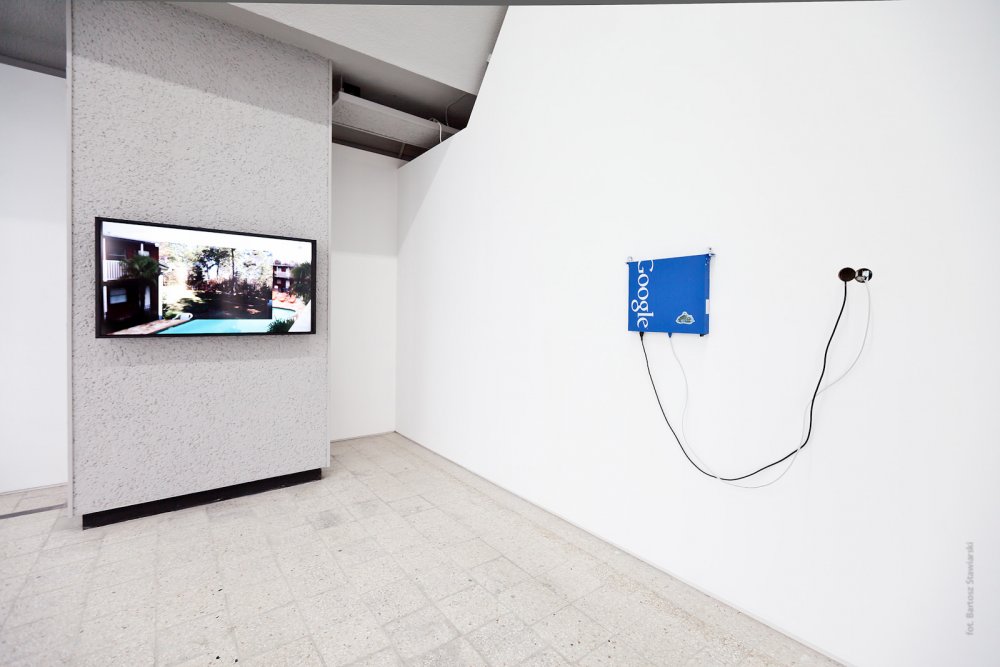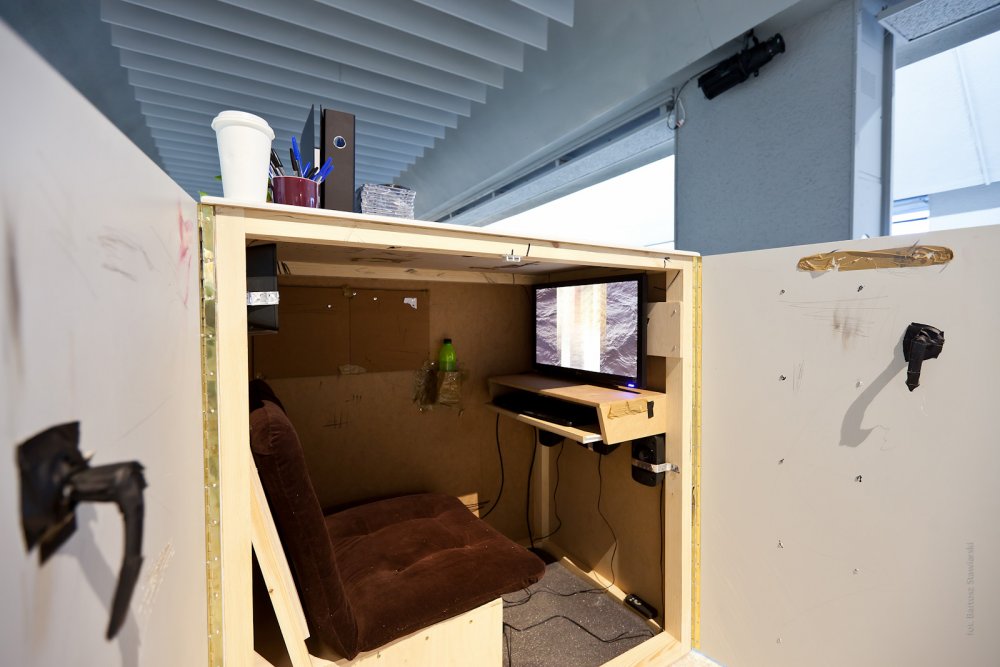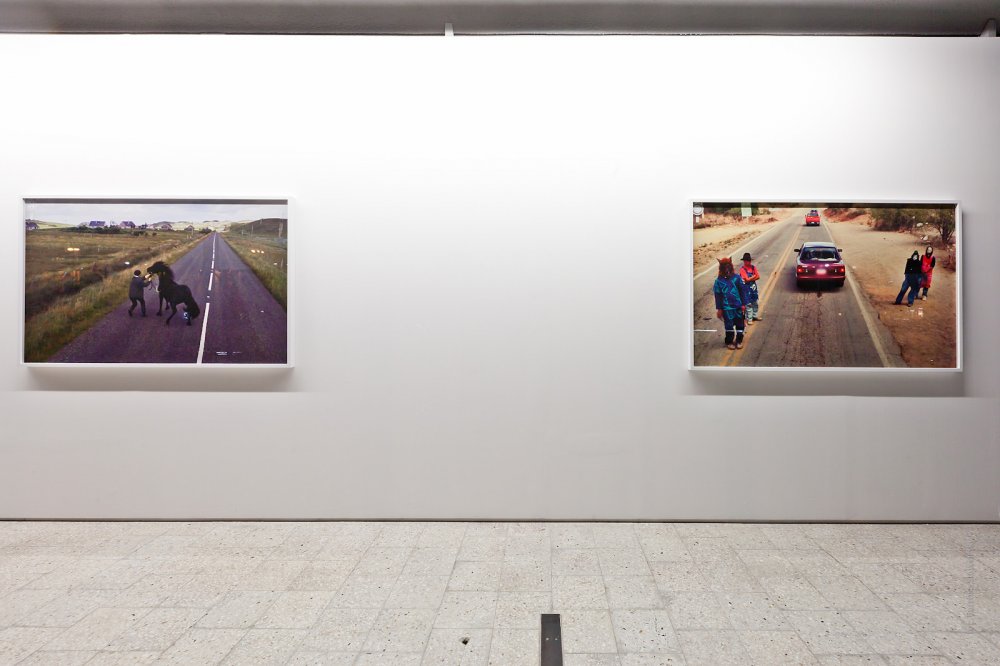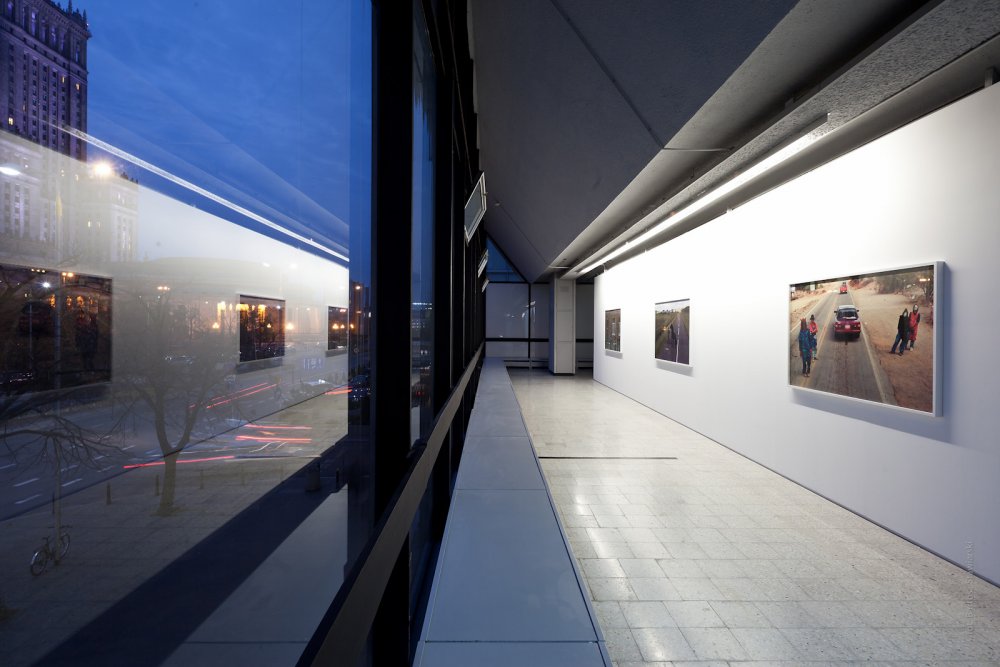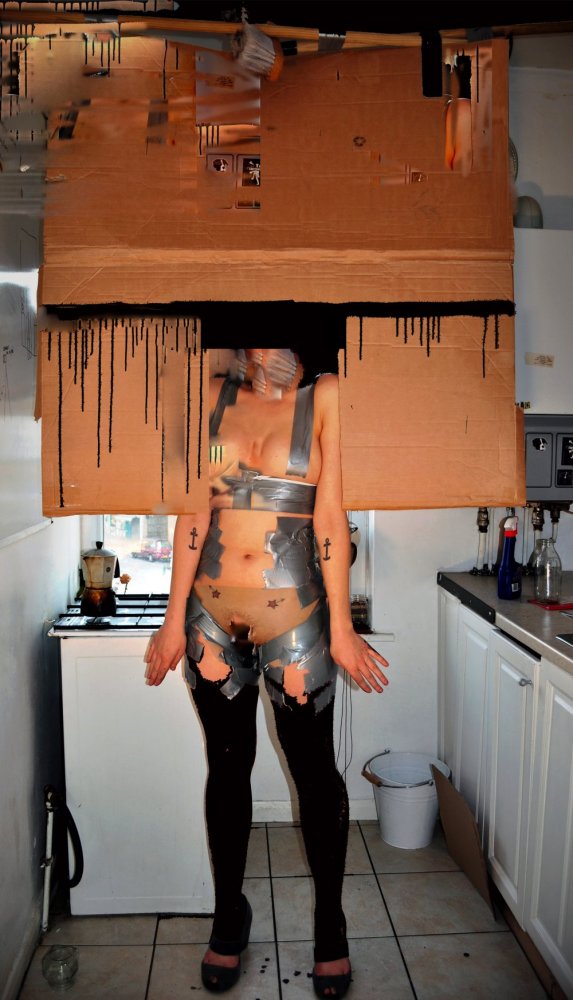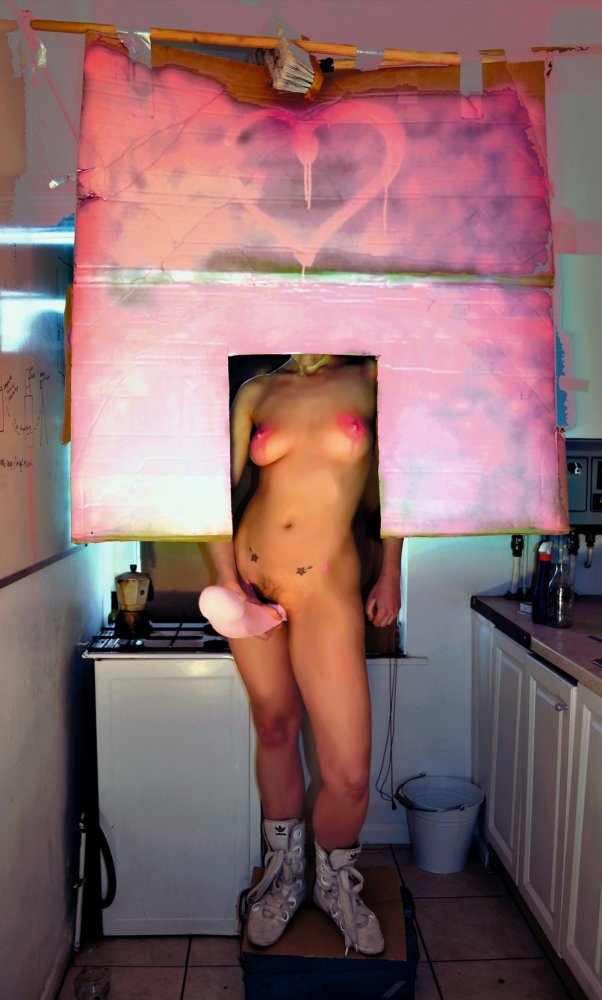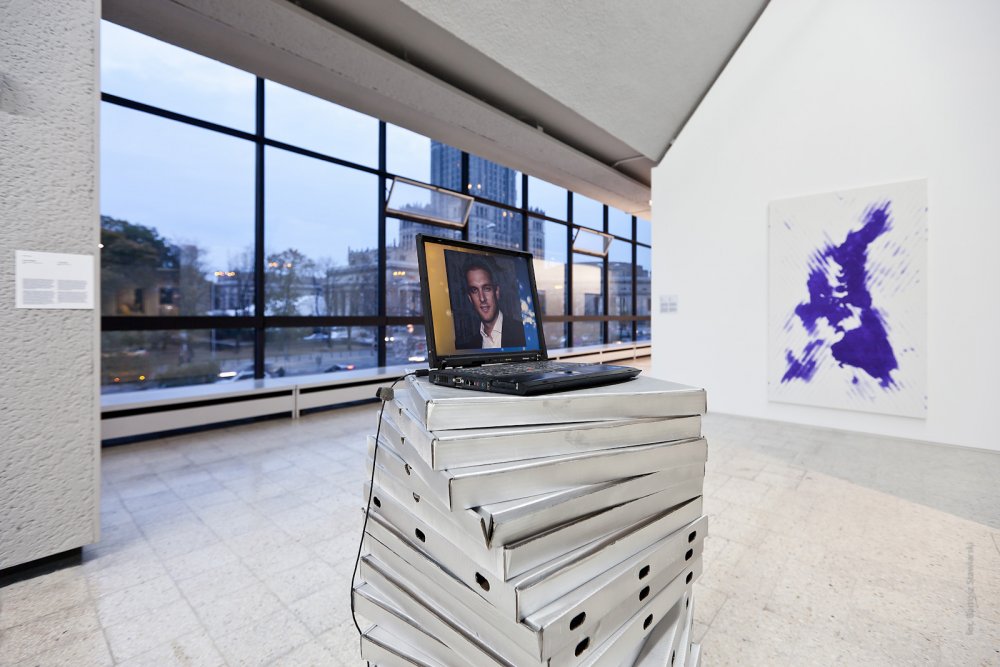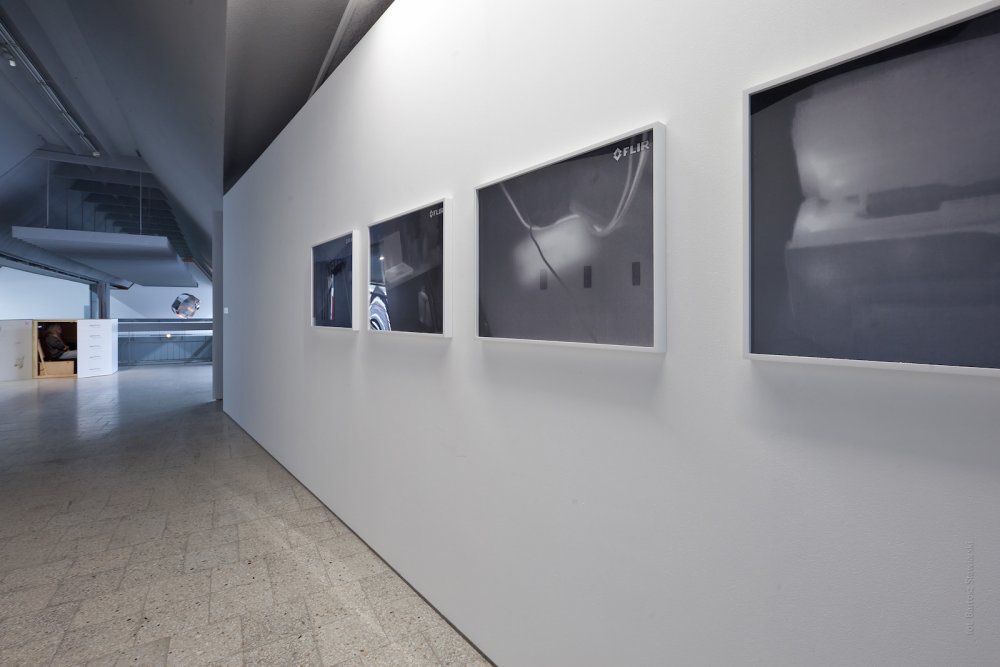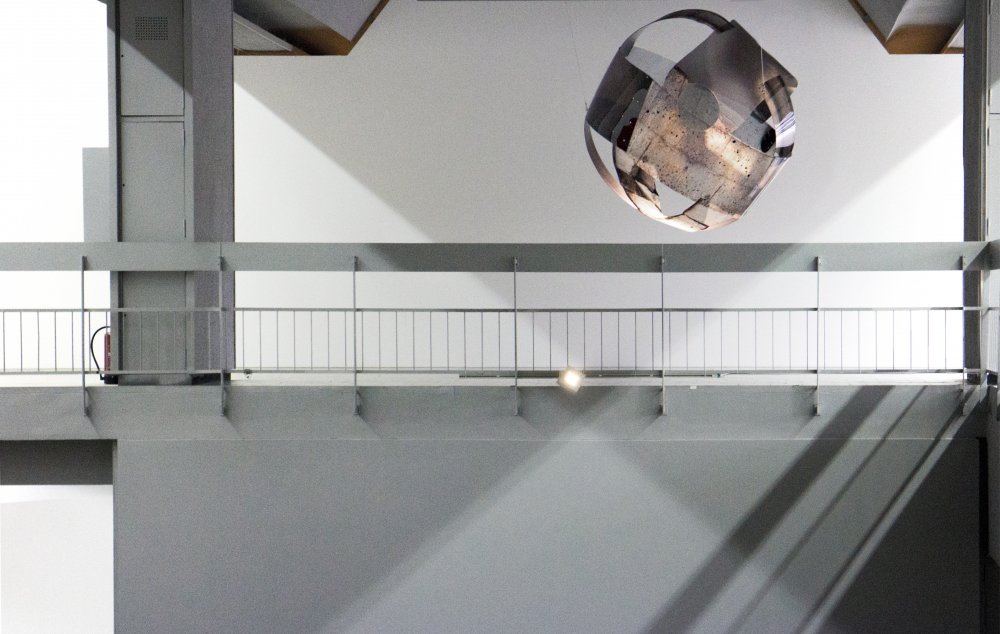“I love internet cafes,” says Natalia Sielewicz through a chuckle, “I have an unhealthy fascination with them”. The curator is in a coffee shop next to a converted furniture sales department store of PRL Poland, that is now, temporarily, the Museum of Modern Art Warsaw where she works. She’s just closed a huge four month programme of exhibitions, performances and talks by artists from around the world called Private Settings, Art After the Internet and if you’re familiar with the art, or just the miscellaneous cities that that art comes from, you’d certainly understand her enthusiasm for the public-private space of the online interface.
It’s an exhibition that features work by artists often labelled as, but not necessarily personally identifying with, an art movement known as ‘post-internet’. There are all the key touchstones, from Ryan Trecartin, Ed Atkins and DIS, to Takeshi Murata, Metahaven and Jon Rafman, as well as some lesser-known but no less interesting artists include Bunny Rogers, Darja Bajagić, and Nicolas Ceccaldi. Pamela Rosenkranz‘s Fiji water bottle and spandex canvases are stretched out on one wall of the MoMAW atrium, while Korakrit Arunandonanchai‘s Levi’s jeans body paintings are hanging on the other. Harm van den Dorpel‘s MoMAW building selfie is winding itself into an endless sphere, hanging from the ceiling between them.
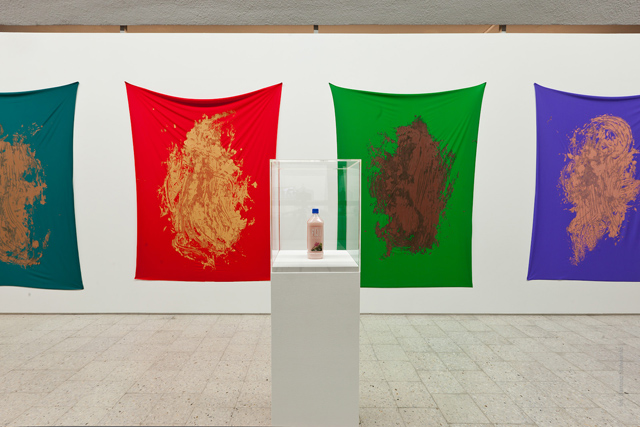
You might note that those artists mentioned above are based along the faultline of a ‘global’ network that’s still centered around the traditional economic centres of the US, UK and western Europe. But there’s also the ‘Live Distillation’ (2013) single-channel video-installation from South Africa’s CUSS Group, work by Saudi Arabia’s Sarah Abu Abdallah and a response to Derek Jarman’s 1993 film Blue by Poland’s Gregor Różański. There are a few artists you’d expect to be included that aren’t and even a couple that you wouldn’t that are.
That’s because the conversation going on around Private Settings is more interesting than age groups and vaguely shared aesthetics. With less of the corporate and none of the speculative, the focus of the exhibition is set squarely on interrogating subjectivity and its interaction with the contemporary consumer-focussed, hyper-capitalist milieu of the internet, by extension questioning what exactly ‘post-internet’ as a branded catch-all really represents. That is, post-internet as a contemporary condition that doesn’t just affect those living where the major markets are, while recognising its influence as a hegemonic spread: “Maybe it’s even more honest to speak from this western-centric perspective because we’re not colonising other countries with this hot word in a very ideologically-charged way that’s both socially and geographically placed.”
You mentioned that when curating the show there was less of a focus on the aesthetics associated with this particular generation of artists and more on identity and the body.
Natalia Sielewicz: I started by looking at Private Settings as a space of intimacy, of performing your identity, not only online; also of how there’s this constant feedback between your online space and offline space interacting with each other. I thought that maybe we could define that precisely as ‘private settings’ and ask whether this is specifically domestic space, is it feminised space? Or is it basically a space where all these issues collide with each other?
And an important thing to me was also, not really thinking about ‘private settings’ as privacy settings, all the issues around surveillance and manipulation. Of course, that is also part of the show but what I found more intriguing was how the ‘black mirror’ of your iPhone or your laptop can give an illusion of intimacy, even though we’re constantly performing in a very narcissistic, exhibitionistic way among our peers and on social media.
I think we have to come to a new conclusion on how to define this condition that we live in and how to apply it to different groups of artists, and different media, without sounding crass and without pissing anyone off. Because even some artists who are in the show wouldn’t want be branded as ‘post-internet’, where as maybe there would be a need for some of the Polish artists to be part of the bandwagon. Or maybe not. It’s treacherous ground [laughs].
There’s often a misconception that because something is presented online, that it has some kind of broadened reach. But the internet, and social media specifically, is so personalised, dispersion is so specific. You can post something and assume that everyone will see it, but everyone won’t.
NS: Well, going back to this thread of colonisation, regional colonisation and also social colonisation, after 1989 many former eastern European countries tried to abolish the label of being ‘eastern’, with or without much success. But for at least 10 years the market, the galleries, the institutional shows, everywhere in Europe would really help to colonise eastern European arts of the 90s, or of the early 2000s. The same artists would reappear and it would be something that the later generations would also have to fight against. So maybe it’s just the natural order, but that brings me to this whole conversation about, say, African post-internet art. I’m sure that it would create a scene that will be perceived as, you know, the Nigerian ‘post-internet scene’ of 2015, 2018 [laughs] and maybe that will evolve into something else…
But it’s still a label that’s originated in the west so maybe you’re right in suggesting that it should potentially stay western-centric…
NS: Yeah, I don’t know, I’ve been thinking about this. There’s such richness in art-making everywhere and there’s such a richness in the internet that’s not western-specific. Maybe we should just let region-specific art flourish without branding it immediately with our Western stamp of evaluation.
I also have a problem with white hegemonic institutions doing there documentA-style research… putting it in neat boxes and categories and high-fiving itself. There is of course the educational potential of that, as long as we allow the subaltern voices to be truly heard, clear and loud.
One of the things that blows my mind, it how impressive Polish graphic design was in the 60s and 70s and how bad it is now. It seems like an extreme reaction to anything that looks vaguely Soviet.
NS: Partially, yeah, that’s a part of it. We have this term that’s called ‘typo polo’…

Like disco polo?
NS: It reflects the terrible aesthetic of early capitalism from the 90s, where it was basically like GeoCities but in the public sphere. People started opening their own enterprises and small businesses, and when you’d drive on the ‘Route 66’ in Poland you’d see all of these really horrible advertising billboards, with really horrible typography. They’d have company names that stand for a thirst for one’s own first business, or their first million, so anything with a suffix ‘-ex’ or ‘pol’. Like, ‘Natalex’, for Natalia, or ‘Glaspol’; anything that would connote western glamour and success ‘incorporated’, whatever service you’re offering and wherever this service is originating from.
This is actually now fetishised in Poland. You have DJ collectives that play on this trope, what we call the ‘kwejk aesthetic’. Kwejk is a website that’s like 4chan or something but rooted in a Polish aesthetic and Polish domains. It’s really crass and disgusting, quite funny but in a very crude way, and it’s embracing this identity that was really pushed under the carpet for many, many years by intellectual and social elites.
It’s quite interesting how, with modernisation, you have to work with these tensions between your aspirations and retaining your identity, even questioning whether there is such a thing as a core identity of a nation state or a nationality.
That reminds me of those pierogi restaurant chains here, Zapiecek, where the wait staff wear those generic folk outfits…
NS: Well, that’s catered to tourists, right? That happens everywhere. I’m talking about something more ‘street’ and something more rooted in everyday vernacular, of kebabs that are falling apart and underground kiosks near the central railway station…
We had this show at the Museum, which was actually called Typo Polo, and featured graphic design of the 90s from old public services and private businesses and there’s an amazing energy in this abundance and excess. I think it’s really interesting to think about in terms of excess. Because, perversely, and speaking of post-internet, I don’t think it’s dealing with excess, I think it’s trying to contain things and feelings to an object.
It’s interesting to think of ‘typo polo’ as this kind of contemporary folk art. I heard that there’s a similar thing going on with immigrant communities running small businesses in places like Berlin, that this internet café and kebab shop aesthetic is actually tied to identity.
NS: I think that’s what CUSS from South Africa is doing too. It’s a totally different aesthetic but they do in situ projects in internet cafés and I think it’s part of this aestheticisation, or a certain genre of the internet cafe as this transitory place. It’s also sad because here you can’t find them any more.
Speaking of London, it’s like this really clandestine public space, where you’re with other people sending money through Western Union, expats are looking for flats and families from the Middle East are on Skype because they can’t set up a direct debit so they can’t have a BT or Virgin Mobile broadband connection…
But to give you an example of the Polish ‘typo polo’ corporate aesthetic present in, let’s say, Polish post-internet art that I think is happening, is that instead of Red Bull of Fiji water, artists would use Monster Energy drink, or these Polish slippers from the 90s called Kubota [laughs].
I felt like this Private Settings exhibition was a good bookend to thinking about post-internet for 2014, or a significant point of transition at least. The label has already been absorbed as a fashion, there are artists making a lot of money and the brand has been reabsorbed into corporate advertising, even as it has just recently been appropriated from it. But I think the exhibition represents a certain maturity of the themes being explored across its artists.
NS: Well, I wonder if in general that might be a certain perception of post internet as this immature hedonistic youth culture of the present… Of course, I am critical of the show as well, but one thing I really didn’t want to do was replicate the aesthetic, to the point that at one moment I was like, ‘oh my god, this is not looking like post-internet art’ [laughs]. **
Select arrow top-right for exhibition photos.
